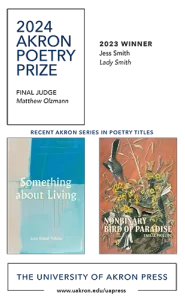American Literary Review – Spring 2007
Volume 18 Number 1
Spring 2007
Biannual
Jennifer Sinor
The Spring issue of American Literary Review provides readers with a rewarding balance of fiction, poetry, and nonfiction. It opens with the lyrical poetry of Karen Carissimo whose poem, “Basho’s Death Poem,” culminates with a haunting image of Basho’s final gift to this earth, “his dreams scattered / like seeds over moors of dry grass, / blooming into flags of iris far beyond / the first Spring of his passing.” Another highlight is the poetry of Katie Ford, poetry editor of The New Orleans Review. Included here are excerpts from her recently published chapbook that traces the fallout from Hurricane Katrina: the “guarded city” – “the dead tonnage / of seal lifted and abandoned by the astonished / laws of water,” a “stormed body,” and the dream “the earth was dry / undrowned it could speak again.”
The Spring issue of American Literary Review provides readers with a rewarding balance of fiction, poetry, and nonfiction. It opens with the lyrical poetry of Karen Carissimo whose poem, “Basho’s Death Poem,” culminates with a haunting image of Basho’s final gift to this earth, “his dreams scattered / like seeds over moors of dry grass, / blooming into flags of iris far beyond / the first Spring of his passing.” Another highlight is the poetry of Katie Ford, poetry editor of The New Orleans Review. Included here are excerpts from her recently published chapbook that traces the fallout from Hurricane Katrina: the “guarded city” – “the dead tonnage / of seal lifted and abandoned by the astonished / laws of water,” a “stormed body,” and the dream “the earth was dry / undrowned it could speak again.” Though the nonfiction in this issue ranges from memoir to a personal reading of Freud’s work on mourning, the highlight is the unassuming memoir of Elizabeth Lantz that recounts a summer of painting dorms in college with men “who share their lives with [her]” unlike those her own age who gather at kegs. What makes her piece so wonderful is the dialogue that brings her fellow painters to life and reveals their humanity to both her and us. She is not only a good listener but an apt student of the moments that make us human.
[www.americanliteraryreview.com/]




